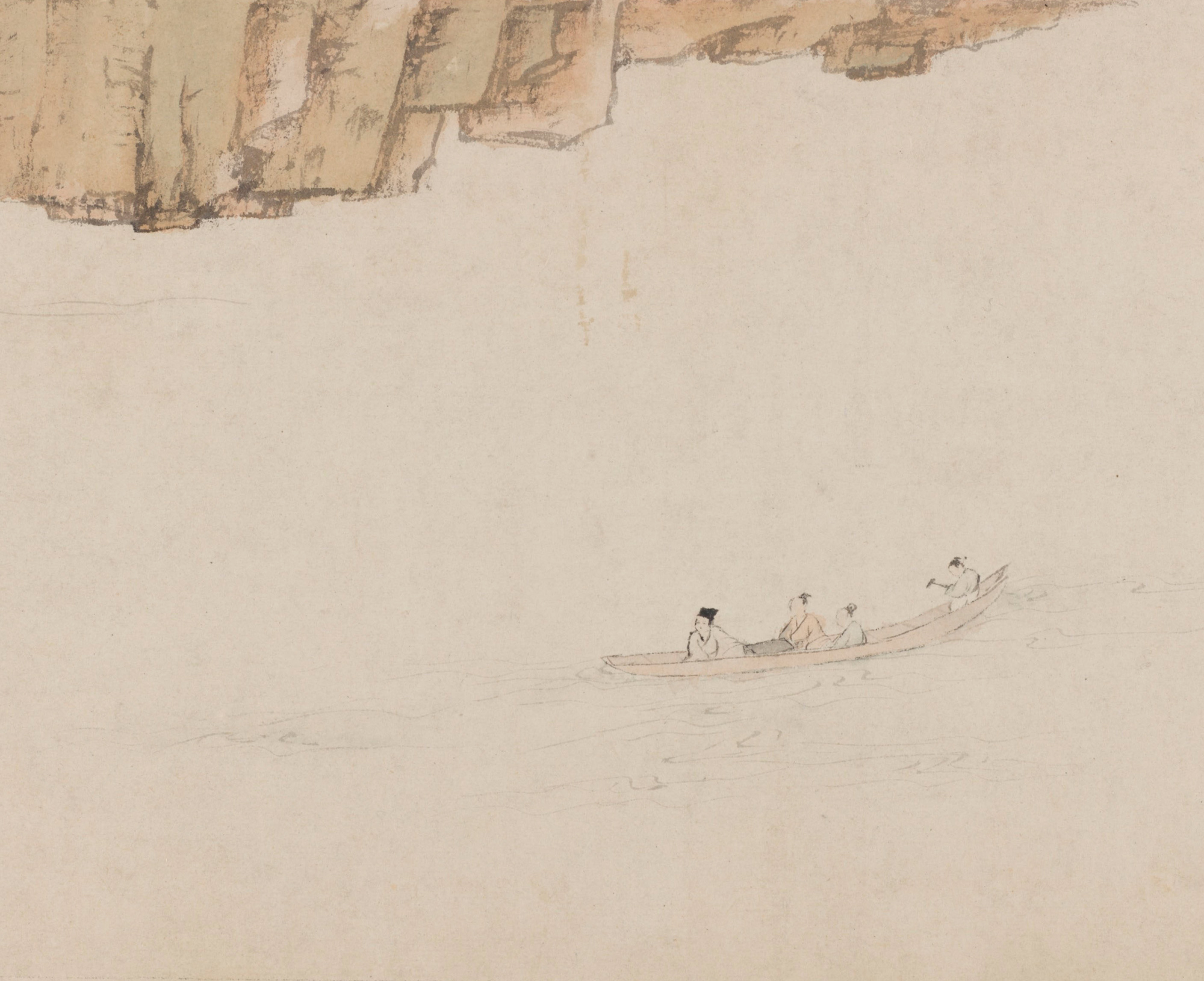Red Cliff
The “Ode to the Red Cliff” (“Chibi fu”) comprises two prose poems by the Chinese poet Su Shi (1037–1101). The first ode describes a boating trip by Su Shi on the Yangtze River in 1082, during which he and his party commemorate a naval battle that occurred at the site more than eight hundred years earlier. The emotionality of the nocturnal boating trip made it a popular subject among painters in China and Japan alike. In the second ode, Su Shi comes ashore on the Red Cliff. The story’s origins and its renderings in Chinese painting made it appealing to artists in both cultures as an opportunity to showcase their own knowledge and interpretation of the theme.
Whereas Japanese painter Ike Taiga places us at eye level with Su Shi and his boating party, Chinese painter Wen Zhengming zooms out, giving us a bird’s-eye view. In Taiga’s image, Su Shi is drinking and singing, whereas in Wen Zhengming’s, Su Shi is heading to a picnic on the shore. The two painters also offer us different interpretations of the boating party. The violent water and unfazed party in Taiga’s work contrast with the stillness of the water and the determination of Su Shi, leaning toward the shore, in Wen Zhengming’s. Additionally, the black and white of the moonlit night in Taiga’s work and the sunlit scenery of Wen Zhengming’s work contrast, demonstrating how a popular theme can be interpreted in countless ways.
Learn more about the work of Ike Taiga, Hayashi Jukkō, and other Japanese literati artists in the exhibition Imagined Neighbors: Japanese Visions of China, 1680–1980 and in the accompanying publication.
Drag the slider to compare the images.


 Red Cliff, Ike Taiga (1723–1776), Japan, Edo period, mid- to late 1760s, hanging scroll, ink and light color on silk, Freer Gallery of Art Collection, National Museum of Asian Art, Smithsonian Institution, The Mary and Cheney Cowles Collection, Gift of Mary and Cheney Cowles, F2022.2.18a–d
Red Cliff, Ike Taiga (1723–1776), Japan, Edo period, mid- to late 1760s, hanging scroll, ink and light color on silk, Freer Gallery of Art Collection, National Museum of Asian Art, Smithsonian Institution, The Mary and Cheney Cowles Collection, Gift of Mary and Cheney Cowles, F2022.2.18a–d
 Boating under the Red Cliff, Wen Zhengming (1470–1559), China, Ming dynasty, 1552, ink and color on paper, Freer Gallery of Art Collection, National Museum of Asian Art, Smithsonian Institution, Purchase—Charles Lang Freer Endowment, F1939.1a–c
Boating under the Red Cliff, Wen Zhengming (1470–1559), China, Ming dynasty, 1552, ink and color on paper, Freer Gallery of Art Collection, National Museum of Asian Art, Smithsonian Institution, Purchase—Charles Lang Freer Endowment, F1939.1a–c